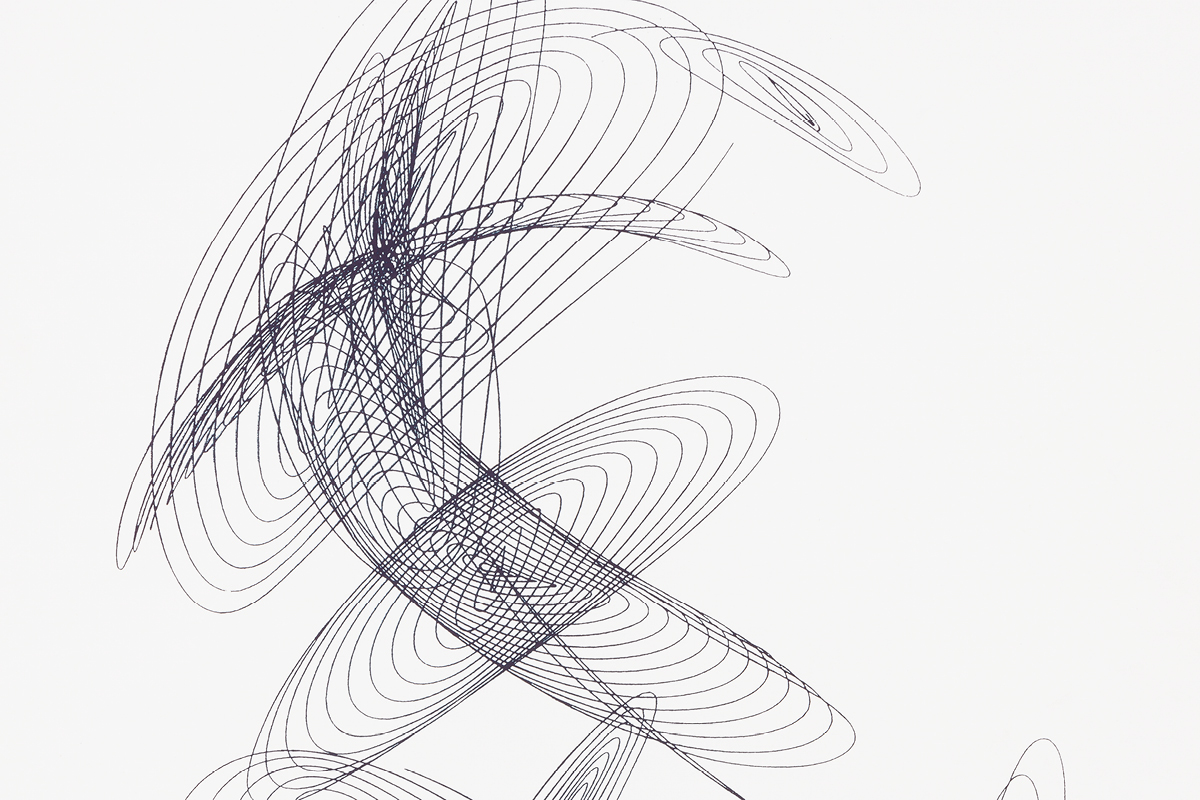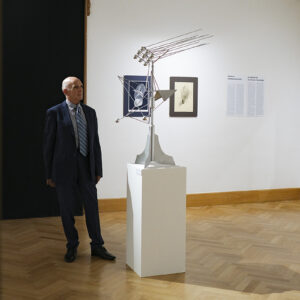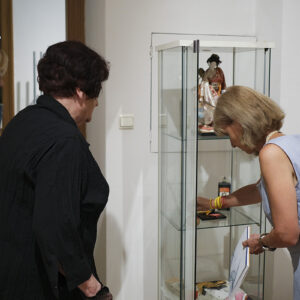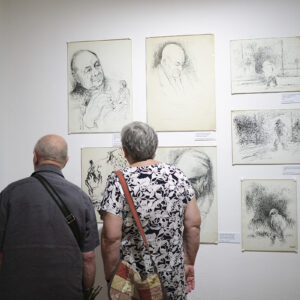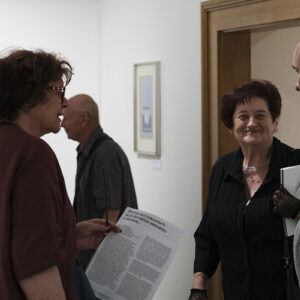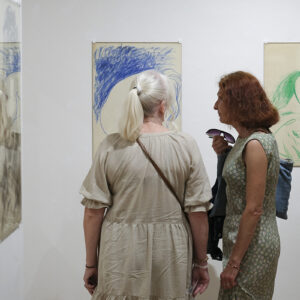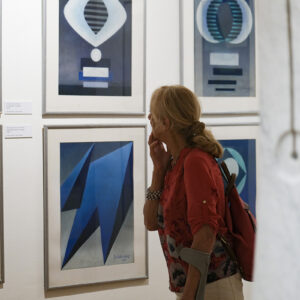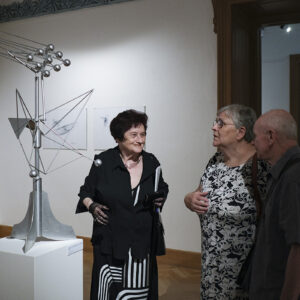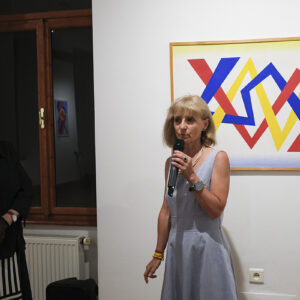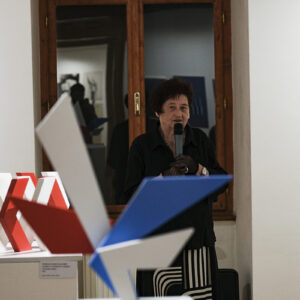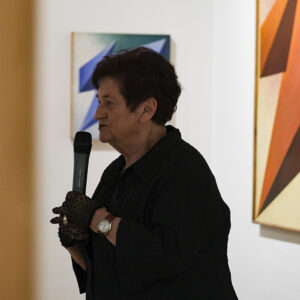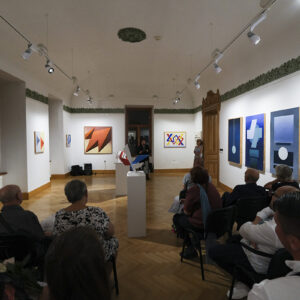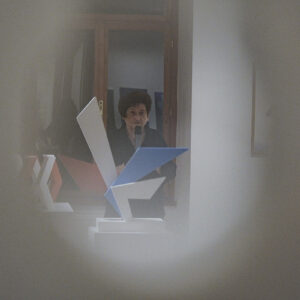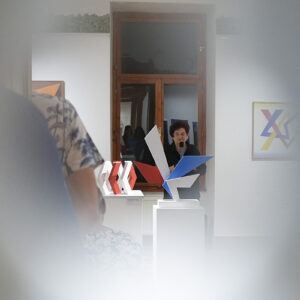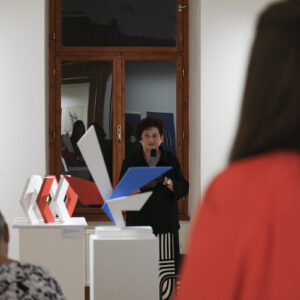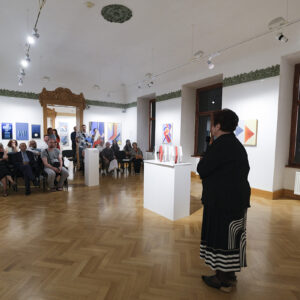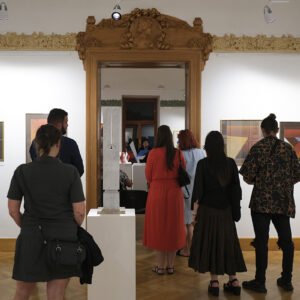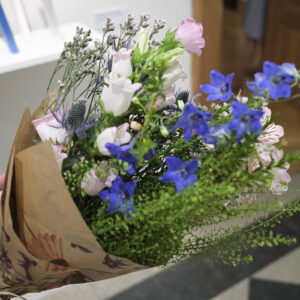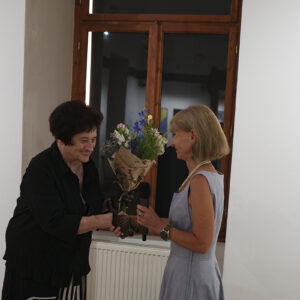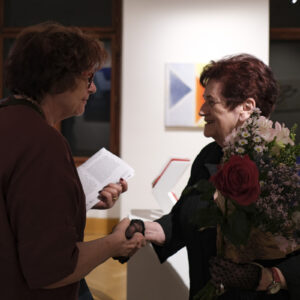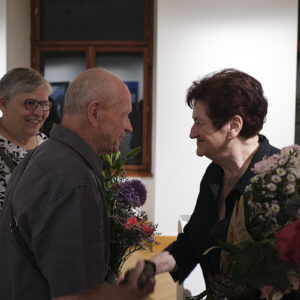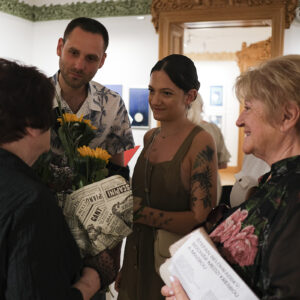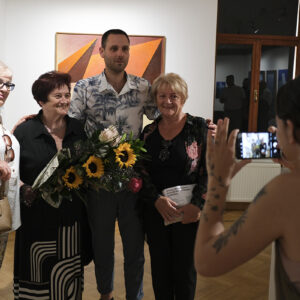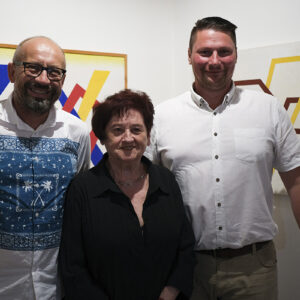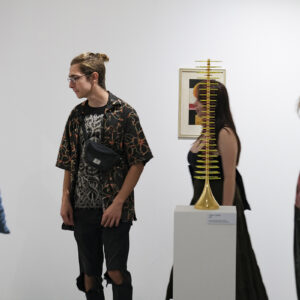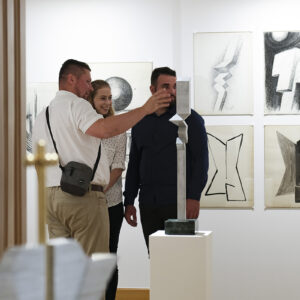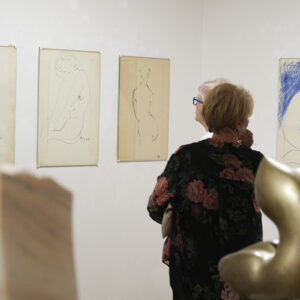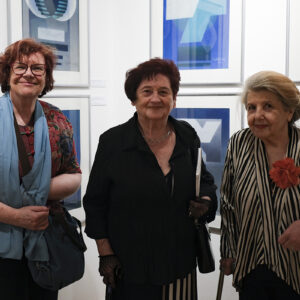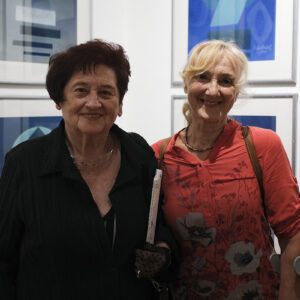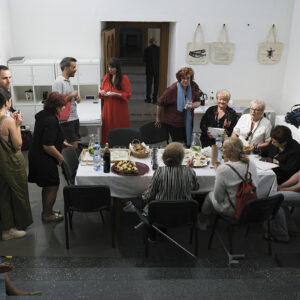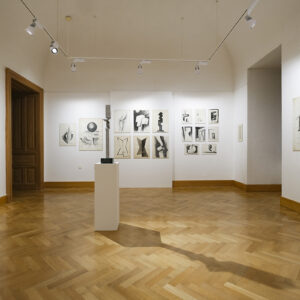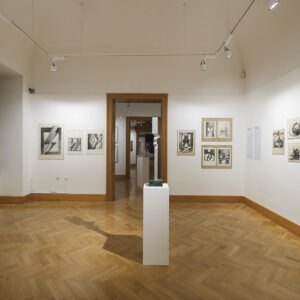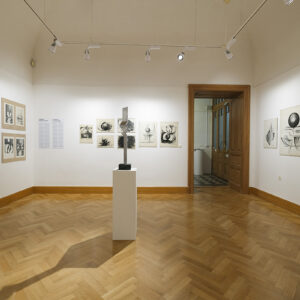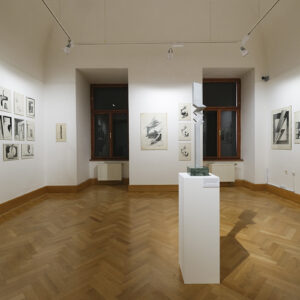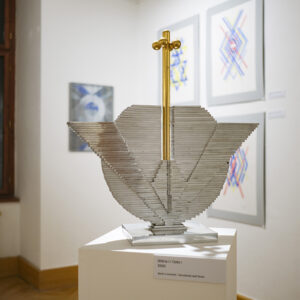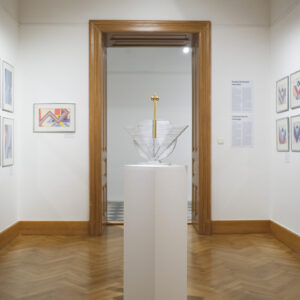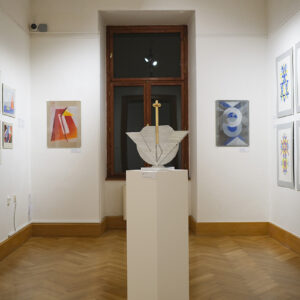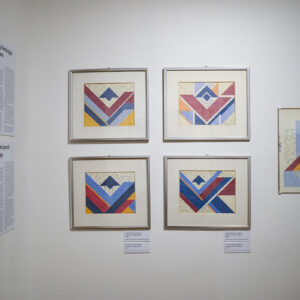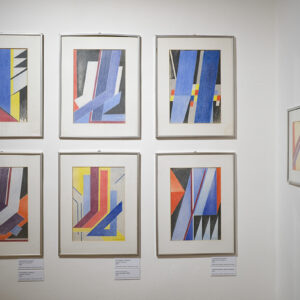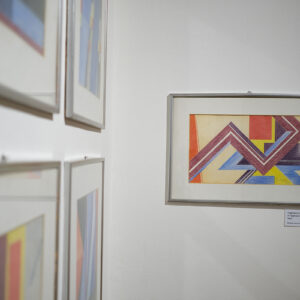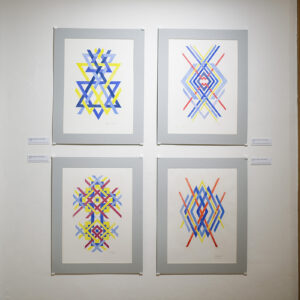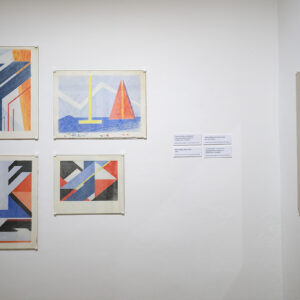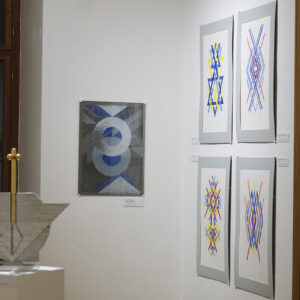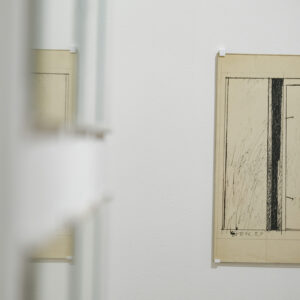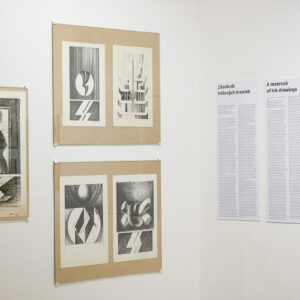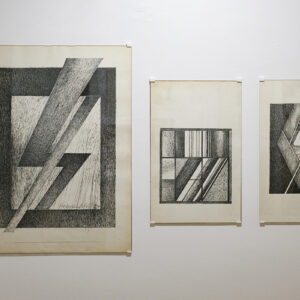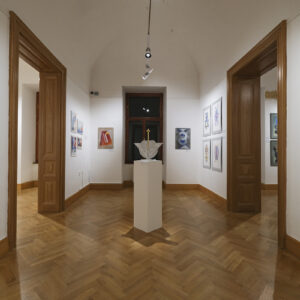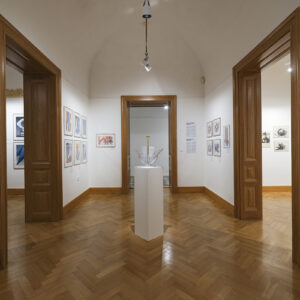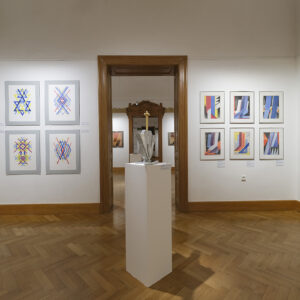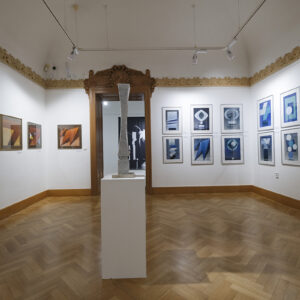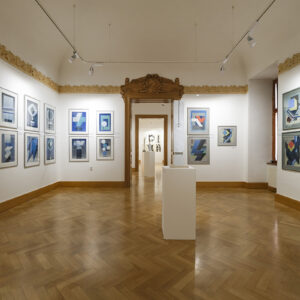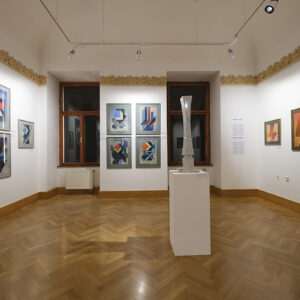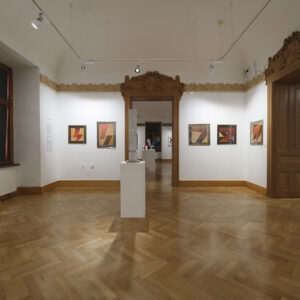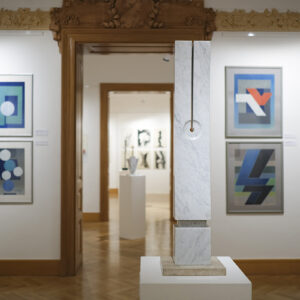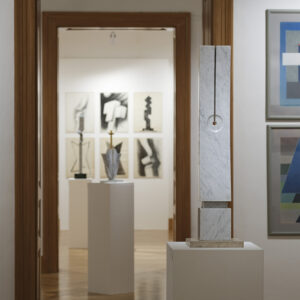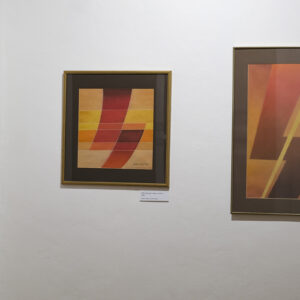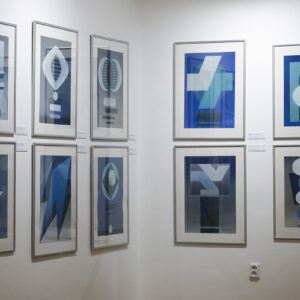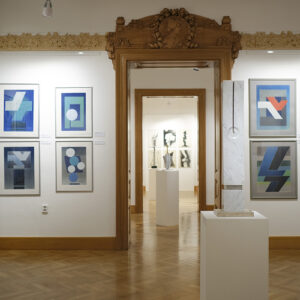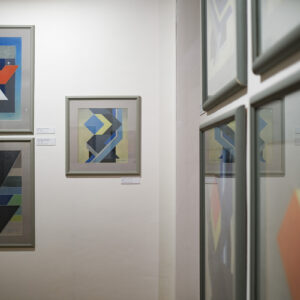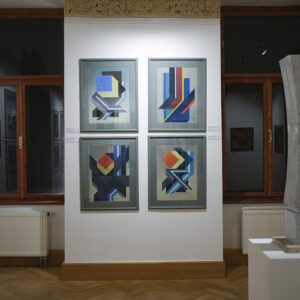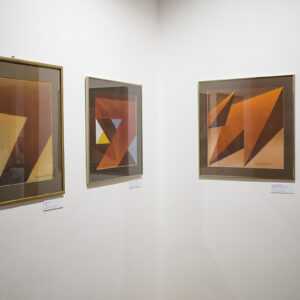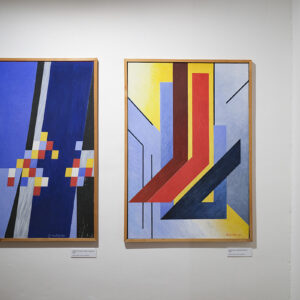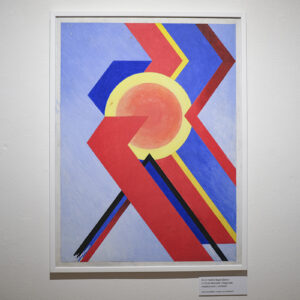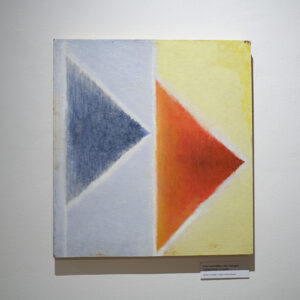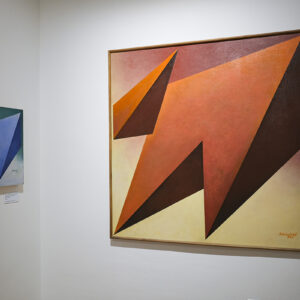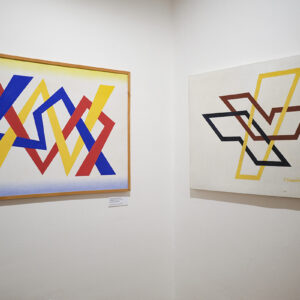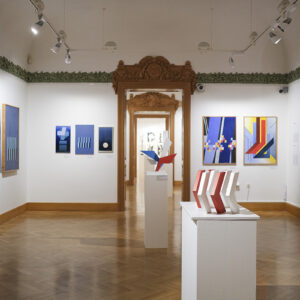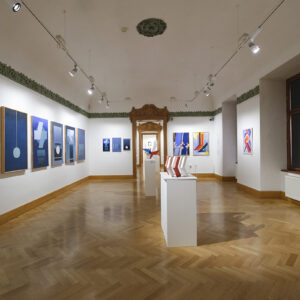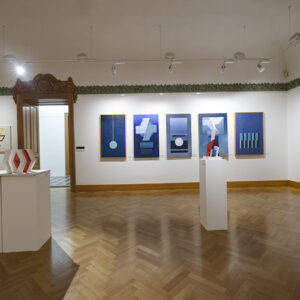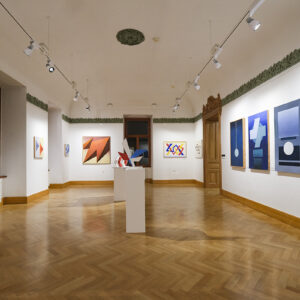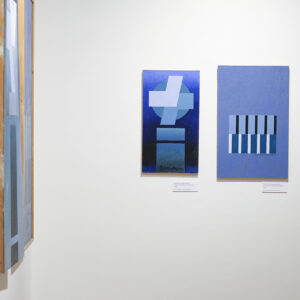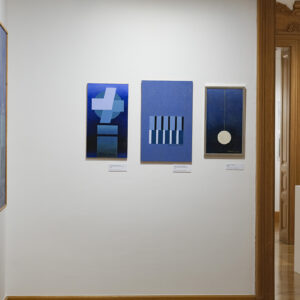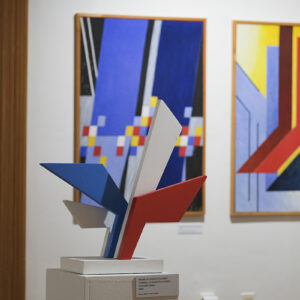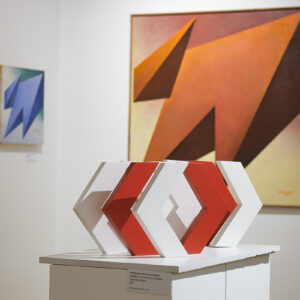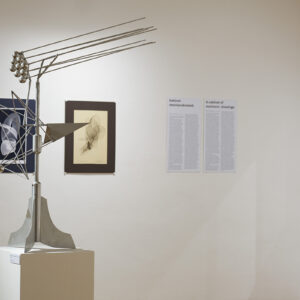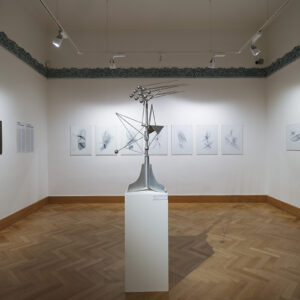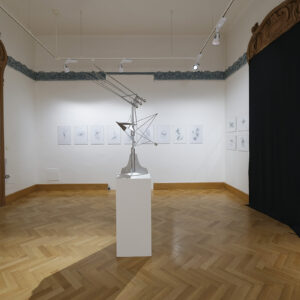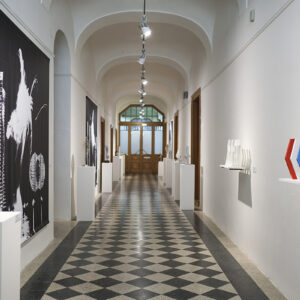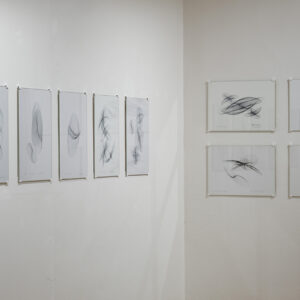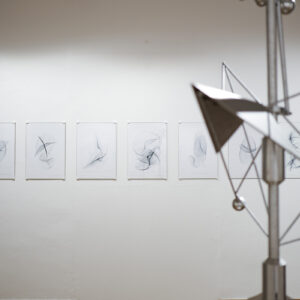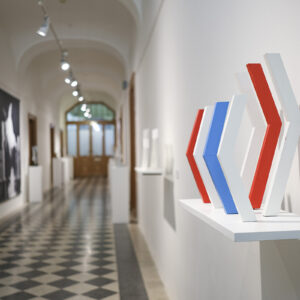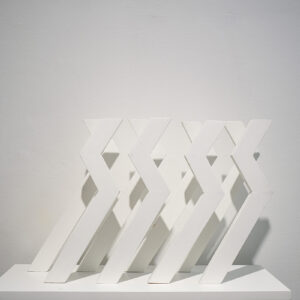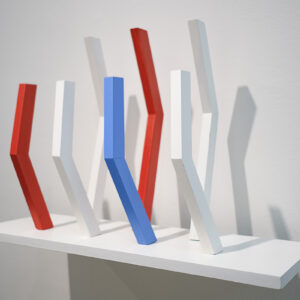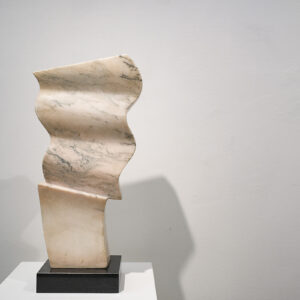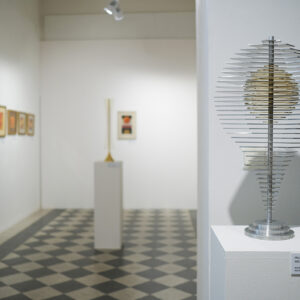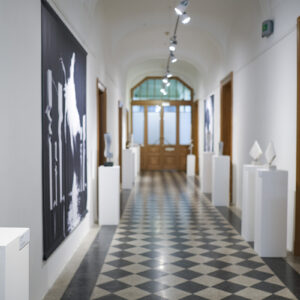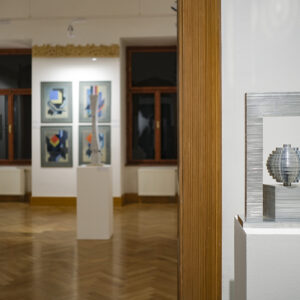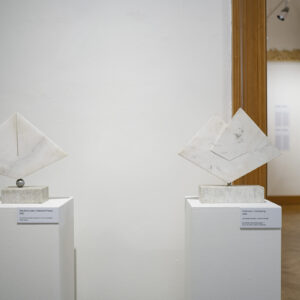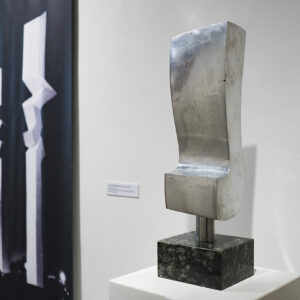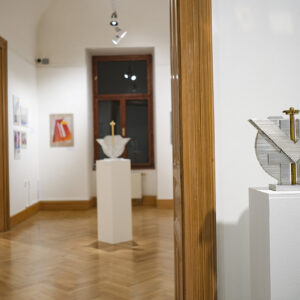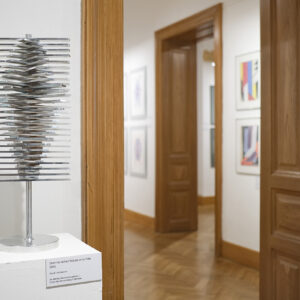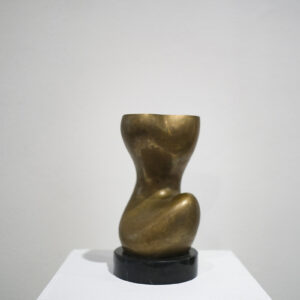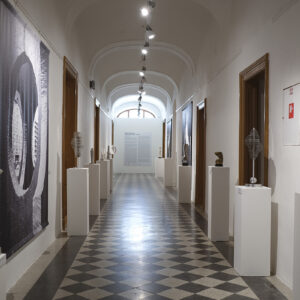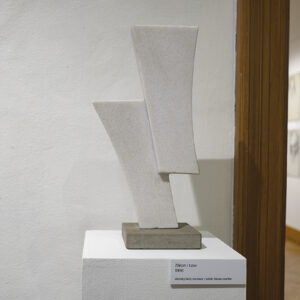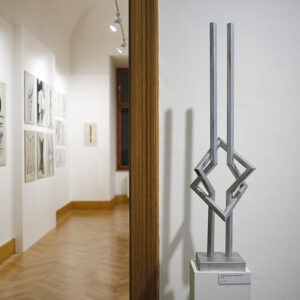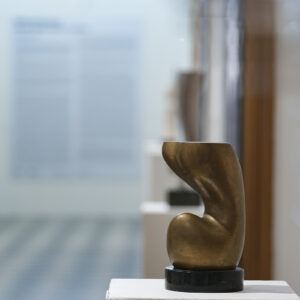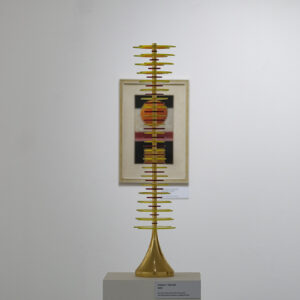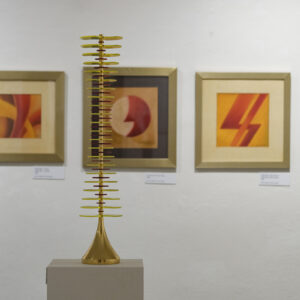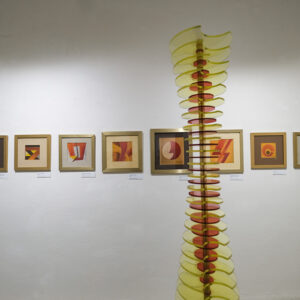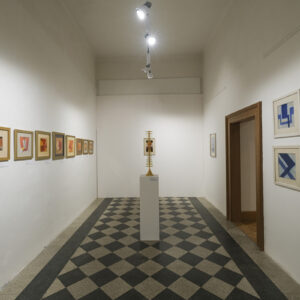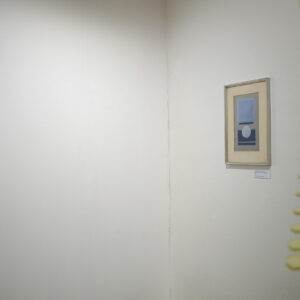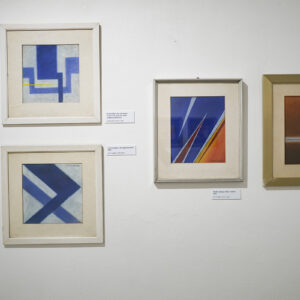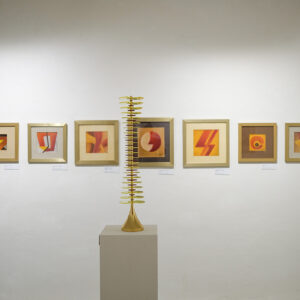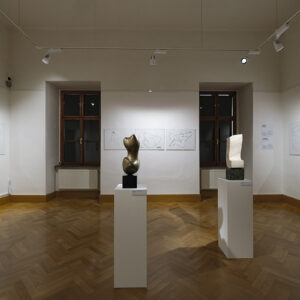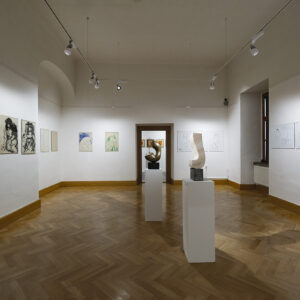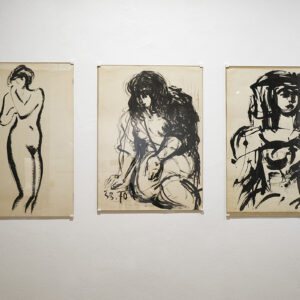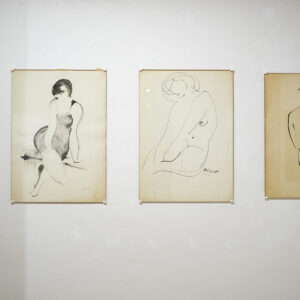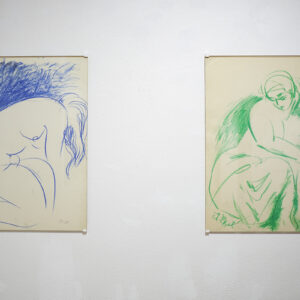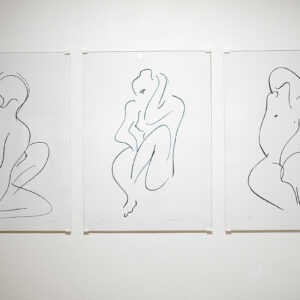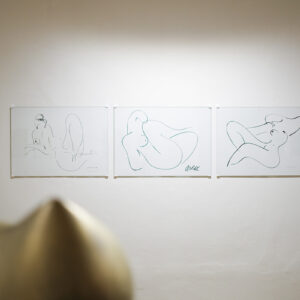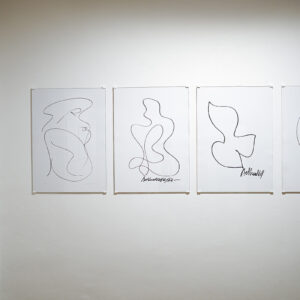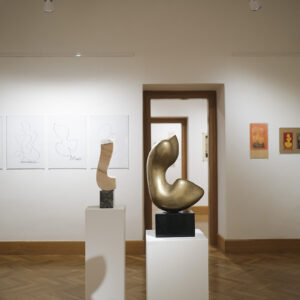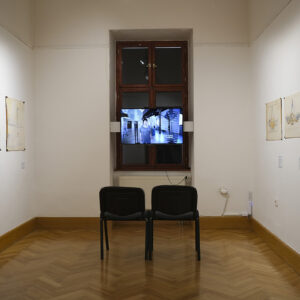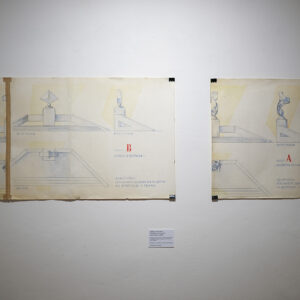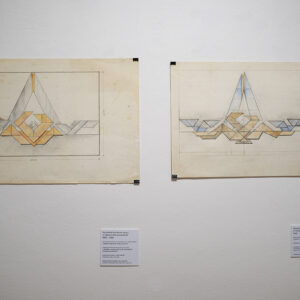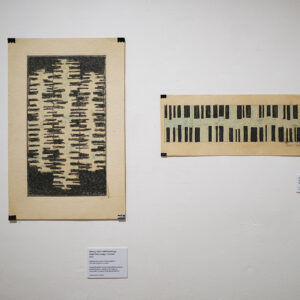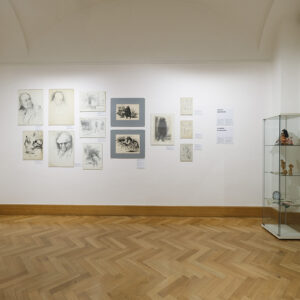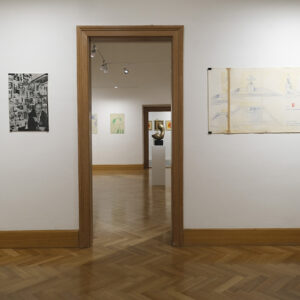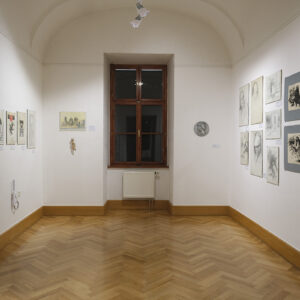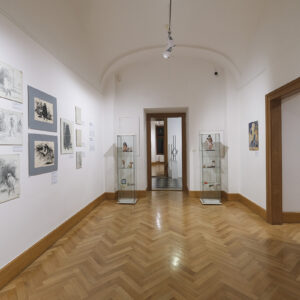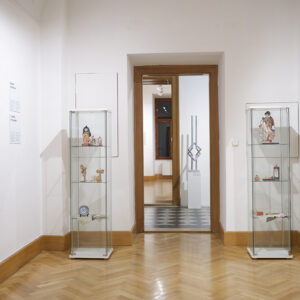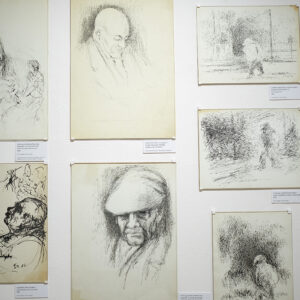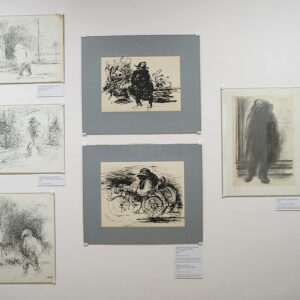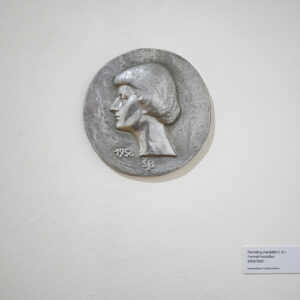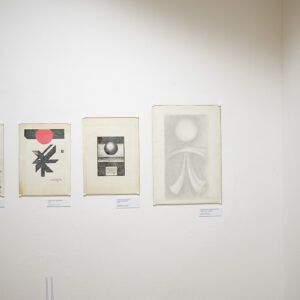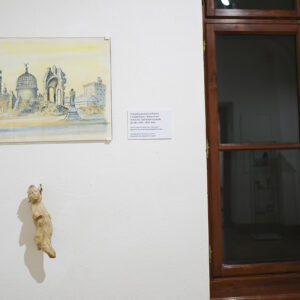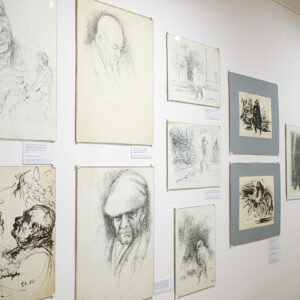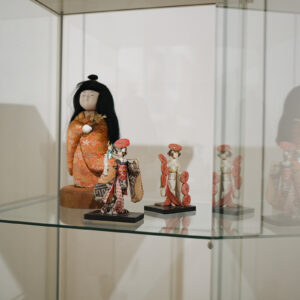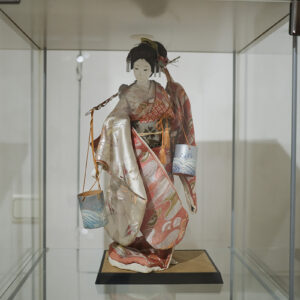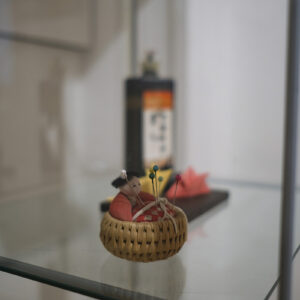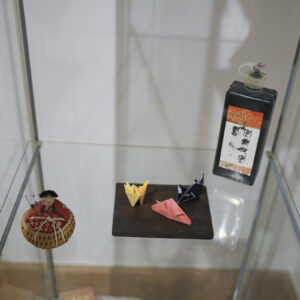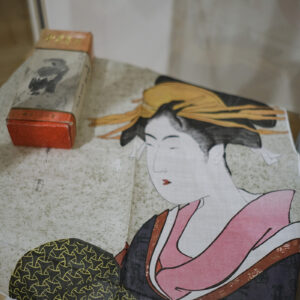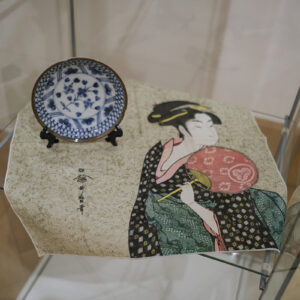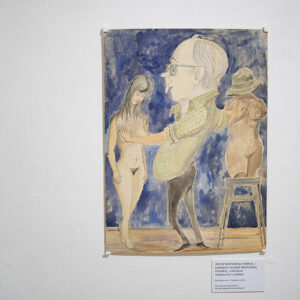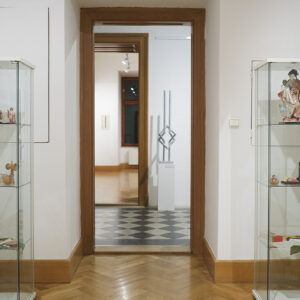Information
Curator
Ľuba Belohradská
Exhibition Designer
Martin Kubina
Opening
June 16, 2022, 6 pm
Venue
Representative halls
Duration
June 17 – August 8, 2022
Download
↘ Invitation
↘ Press release
↘ Curatorial text
Support
With financial support of the Slovak Arts Council public funds. The Council is the leading partner of the project.
The concept of the exhibition titled The Sculptor Between Drawing and Painting focuses on presenting Belohradský’s work from the period 1964 to 2003. It presents his sculpture artefacts only in a second-hand form. The exhibits are arranged chronologically into seven sections which are divided between individual rooms based on the material used for their creation: ink drawings, pastels, coloured pencils (dry pastel). The graphic technique of serigraphy is incorporated as a “two-phase” artefact: a) his nude drawings from 1966 were multiplied using serigraphy in the early 1990s; b) an extensive formal experiment, to which the artist dedicated three years of focused work (1972 – 1974) and which can be perceived as a lingering joyful euphoria from the formative experiences from the World Expo ’70. He called the experiment “pendulum drawings”. Today, galleries classify it as “mechano-drawings” or pre-computer graphic. In this case, the experiment consisted of drawings made with a toy – a children’s pendulum which the artist equipped with a ball pen. The pastels, which represent a majority of the drawings, are spread across two rooms. A smaller space is dedicated to small-scale drawings while a larger one contains his so-called „remakes”. These are large-format quotes of the sculptor’s own sculptures from a happier period – the 1960s. Another room is dedicated to drawings with coloured pencils – dry pastel. In this case, the drawing pattern dictates the density of the individual lines that follow a ruler-style hatching pattern and result into seamless, strictly defined monochromatically coloured areas.
Abstract geometric drawings had turned Belohradský into a devoted apologist of the methodology. The sculptor started painting with acrylic on fibreboard in the late 1970s. In the following decades, he would return to this medium all the more often, gradually increasing its size. In his paintings (just as in his pastel drawings), we can observe conscious returns to specific themes which are in a different scale than the original ones and they also feature different colour combinations. These are distinctive signs of serial thinking, which is a part of the concretist abstract geometric approach. The paintings also reflect the artist’s nostalgia for sculptures which motivated him to create even more remakes.
The abstract composition designs of Belohradský’s geometric paintings are an artistic interpretation of his life journey of a sculptor-engineer who would create large-scale sculpture objects for the public space: rectangular and diagonal traversing of construction scaffoldings and parallel and intersecting concrete verticals allow us to regain access to his authentic creative processes.
Finally, we need to mention two smaller introductory exhibition spaces containing archival materials. The first one is A Cabinet of Memories which presents various artefacts from the sculptor’s trip to Japan (1970), repeated reminiscences of the sculptor Ján Koniarek from Trnava as well as a revived memory of his field trip to the bombarded Dresden (1958). He kept coming back to these memories as it is apparent from his drawings of Japanese motives and many fictional portraits of the old master from Trnava. The neighbouring space is dedicated to a video documentation of the Sculptor – Engineer exhibition (2021) and presentation of a few preserved architectural and other design proposals for the public space.
Štefan Belohradský (*1930, Preseľany, district of Topoľčany – †2012, Bratislava) studied at the Faculty of Architecture at the Slovak University of Technology in Bratislava between 1948 – 1952 (V. Karfík, J. E. Koula, E. Hruška, A Piffl, J. Svetlík). Between 1954 – 1959, he studied sculpture at the Academy of Fine Arts and Design in Bratislava (prof. F. Štefunko). Between 1961 – 1968, he taught at the Secondary School of Applied Arts in Bratislava. In 1967, he became a founding member of the Concretist Club in Slovakia (together with his wife and art theorist Ľuba Belohradská). The artist exhibited at EXPO ’70 in Osaka, Japan and between 1968 – 1970, he exhibited with the Concretist Club across Czechoslovakia and abroad and then again after 1997 when he participated at various exhibition projects of the international MADI movement. His first solo debut did not come before 1994 (Selected Works 1964 – 1994). His creative career was negatively affected by his twenty year long absence from the public art scene during the 1970s and 1980s.
The exhibition titled Štefan Belohradský: The Sculptor Between Drawing and Painting follows a previous curatorial project of the fine art theorist Ľuba Belohradská from 2021 which was held at the Synagogue – Centre of Contemporary Art of the Ján Koniarek Gallery in Trnava under the title Štefan Belohradský: The Sculptor – Engineer. The exhibitions, which were originally planned for the 90th anniversary of the artist’s birth (August 30, 1930, Preseľany – April 19, 2012, Bratislava), are being held with a certain time delay. They are presented as a result of a curatorial research focused on the history of Slovak sculpture of the 20th century.
Despite his numerous activities at both the domestic and international art scenes (from the mid-1960s), Belohradský’s artistic biography is marked with his late solo exhibition debut (1994 – Trnava, 1995 – Nitra), which was caused by the ideological restrictions of the period 1970 – 1990 and linked directly to his tendencies toward abstract geometry art.
After his early childhood in Čermany in a family of countryside teachers, he moved to Trnava where he met with the aging sculptor Ján Koniarek while attending a secondary grammar school. Parental authority directed him toward studying architecture (1948 – 1952), and thus his desire for fine art would not be fulfilled until the years he spent at Bratislava’s AFAD at the studio of monumental sculpture led by professor Fraňo Štefunko (1954 – 1959). The sculptor’s early steps led him on an educational route to a secondary school of applied arts in Bratislava where he taught at the departments of ceramics and stone sculpture (1961 – 1969).
The dual education of an architect and sculptor – despite these disciplines usually going harmonically hand-in-hand with each other – brought the young artist more harm than good. As a part of his initial moves in the first half of the 1960s, Belohradský got inspired by the European avant-garde of the interwar period which was not common on the domestic art scene. He subsequently came up with his own creative program which followed the period’s current development trends within fine art: neo-constructivism, op-art, kinetic art and minimalism. In search for his own artistic expression, he went through several stages, from tendencies toward stylised human forms to a so-called absolute shape expressed in stone sculptures as well as numerous nude drawings whose final stage was an almost abstract and harmonic array of lines. At the same time, he would also experiment with abstract geometry when his stone sculptures, distinctively tectonically modified, would focus on the contrast between smooth and grainy surfaces while trying to symmetrically balance colliding opposing forces. Stone – specifically marble would suit his aesthetic needs best, but he would have most probably wanted to try some historically untested materials and technologies as well. He had reached a technicist way of thinking – a big breakthrough (1964 – 1965). The new morphology included incorporating non-traditional materials which were in line with the neo-constructivist sculpture trends of the time. He would use silvery kinds of metals – aluminium, duralumin, polished stainless steel as well as translucent clear and coloured plexiglass and a little bit later on also industrial glass, specifically thick-walled glass tubes. He would not create his sculpture objects with traditional technological processes, but rather construct them into a finite system of shapes made of precisely defined segments, arranged consecutively with regular intermissions and layered horizontally on one or two axes. It resulted into airy and symmetrical compositions with rich silhouettes, emitting an elegance of shapes. They corresponded with the period artefacts of op-art and kinetic fine art pieces, specifically the works of a so-called static kineticism. The viewer was able to experience the kinetic aspect of the piece by moving around the sculpture creation. The sculptor also worked on moving sculptures – mobiles (from 1965), responding to the impulses of the natural element of wind. His masterpiece would become a kinetic object titled The Sun of Hope (1969) created for the interior of the Czechoslovak Pavilion at the World Expo ’70 in Japanese Osaka where it hang from the ceiling over the heads of the curious visitors. Its slow circular movement of the two-tone metal object was provided by an electric motor.
Just when the artist started penetrating on the international art scene, his promising career was drastically interrupted by a sudden change in the national politics’ course. After 1970, he was forced to stop working on his experimental projects and the imposed national censorship withdrew his works from exhibition spaces. A sad chapter in his biography was created when three of his large-scale pieces were removed from the public space (Humenné: Spindle, 1966; Ostrava: a symposium sculpture Magic Tree, 1967; Bratislava – Matador subdivision: a spatial composition of 7 bent prisms made of natural red and blue concrete, 1971). The Slovak sculptures were destroyed between 1973 – 1974, while the one from Ostrava survived its return to town after being transferred back from the “backwoods” of the border.
The artist responded to these unfortunate events by shifting his focus to drawing and painting, but he presented only a selection of his pieces for the first time in 1994. After 1990, when the state oversight of art was over, he suffered from sudden medical issues which made his shift toward drawing and painting more permanent this time.
The concept of the exhibition titled The Sculptor Between Drawing and Painting focuses on presenting Belohradský’s work from the period 1964 to 2003. It presents his sculpture artefacts only in a second-hand form. The exhibits are arranged chronologically into seven sections which are divided between individual rooms based on the material used for their creation: ink drawings, pastels, coloured pencils (dry pastel). The graphic technique of serigraphy is incorporated as a “two-phase” artefact: a) his nude drawings from 1966 were multiplied using serigraphy in the early 1990s; b) an extensive formal experiment, to which the artist dedicated three years of focused work (1972 – 1974) and which can be perceived as a lingering joyful euphoria from the formative experiences from the World Expo ’70. He called the experiment “pendulum drawings”. Today, galleries classify it as “mechano-drawings” or pre-computer graphic. In this case, the experiment consisted of drawings made with a toy – a children’s pendulum which the artist equipped with a ball pen. The pastels, which represent a majority of the drawings, are spread across two rooms. A smaller space is dedicated to small-scale drawings while a larger one contains his so-called “remakes”. These are large-format quotes of the sculptor’s own sculptures from a happier period – the 1960s. Another room is dedicated to drawings with coloured pencils – dry pastel. In this case, the drawing pattern dictates the density of the individual lines that follow a ruler-style hatching pattern and result into seamless, strictly defined monochromatically coloured areas. Abstract geometric drawings had turned Belohradský into a devoted apologist of the methodology. The sculptor started painting with acrylic on fibreboard in the late 1970s. In the following decades, he would return to this medium all the more often, gradually increasing its size. In his paintings (just as in his pastel drawings), we can observe conscious returns to specific themes which are in a different scale than the original ones and they also feature different colour combinations. These are distinctive signs of serial thinking, which is a part of the concretist abstract geometric approach. The paintings also reflect the artist’s nostalgia for sculptures which motivated him to create even more remakes. The abstract composition designs of Belohradský’s geometric paintings are an artistic interpretation of his life journey of a sculptor-engineer who would create large-scale sculpture objects for the public space: rectangular and diagonal traversing of construction scaffoldings and parallel and intersecting concrete verticals allow us to regain access to his authentic creative processes.
Finally, we need to mention two smaller introductory exhibition spaces containing archival materials. The first one is A Cabinet of Memories which presents various artefacts from the sculptor’s trip to Japan (1970), repeated reminiscences of the sculptor Ján Koniarek from Trnava as well as a revived memory of his field trip to the bombarded Dresden (1958). He kept coming back to these memories as it is apparent from his drawings of Japanese motives and many fictional portraits of the old master from Trnava. The neighbouring space is dedicated to a video documentation of the Sculptor – Engineer exhibition (2021) and presentation of a few preserved architectural and other design proposals for the public space.
In cooperation with 3D Real — Virtuálne prehliadky.
Poster
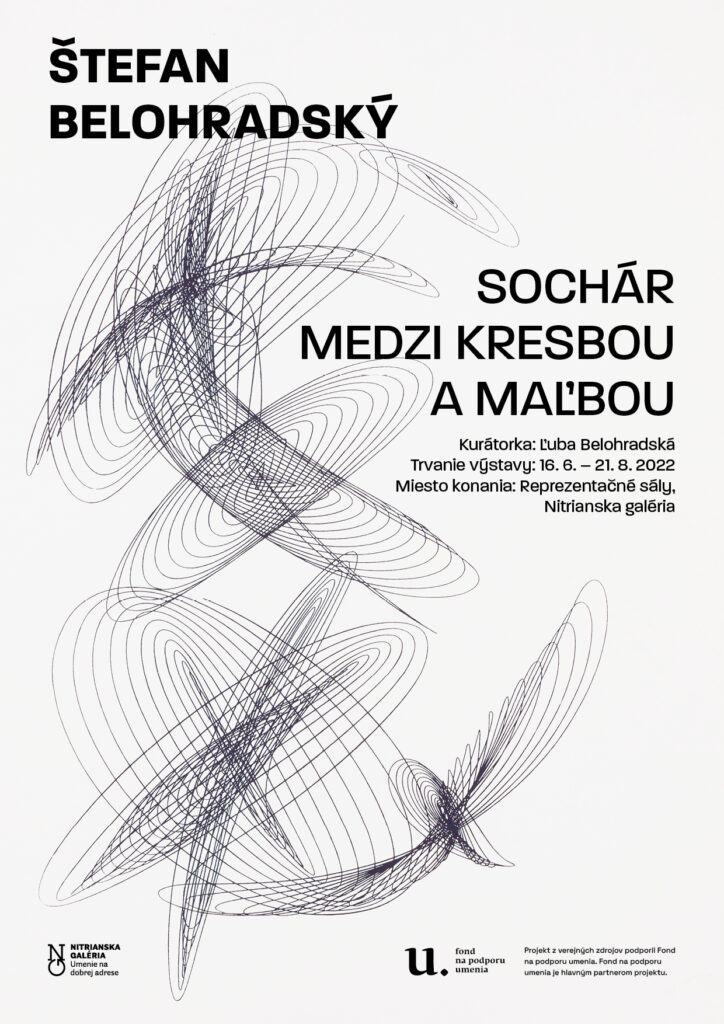
Exhibition opening
Photo: Martin Daniš
Exhibition views
Foto: Martin Daniš
Catalogue
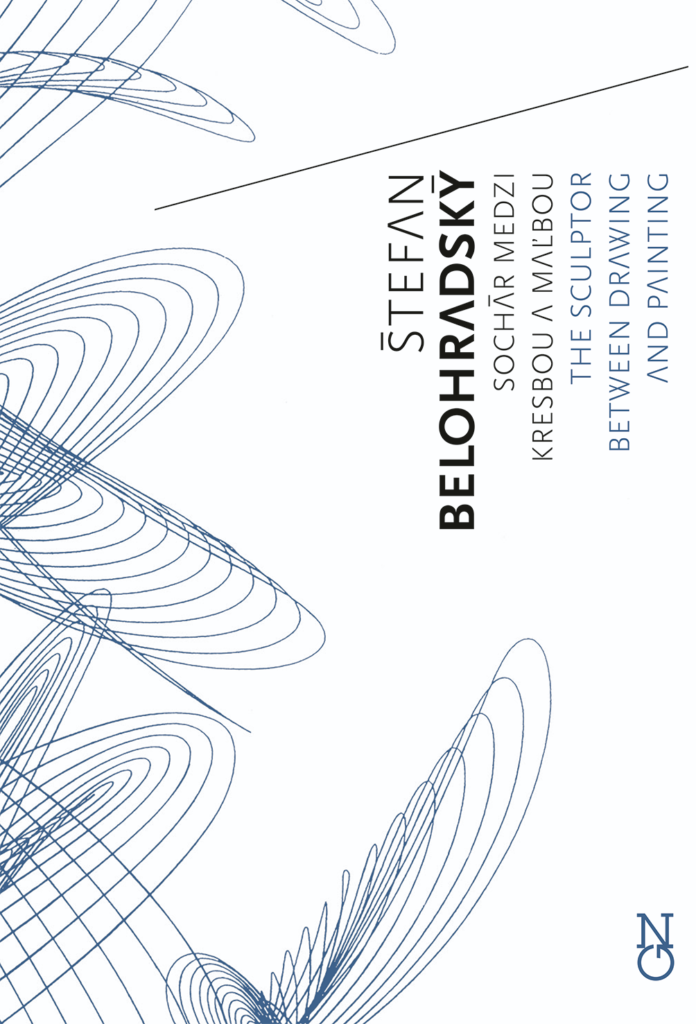
The bilingual (Slovak-English) catalogue features an introductory study divided into three chapters (Instead of Introduction – Contexts, Sculptor – Engineer, Prerequisites to Drawing), a selection of reproduced drawings, prints and paintings as well as the artist’s biography.
